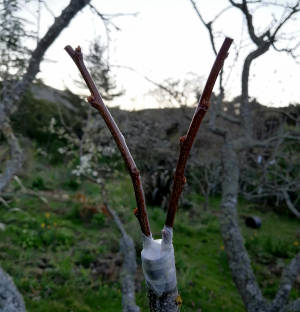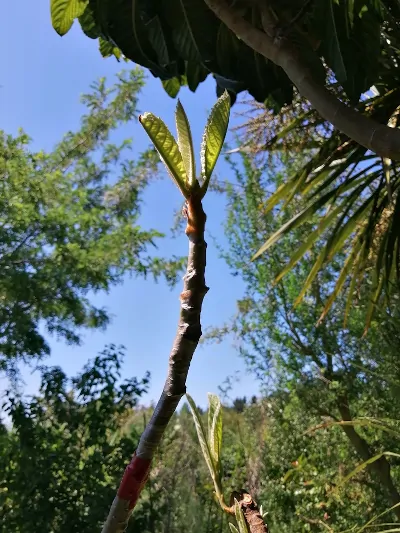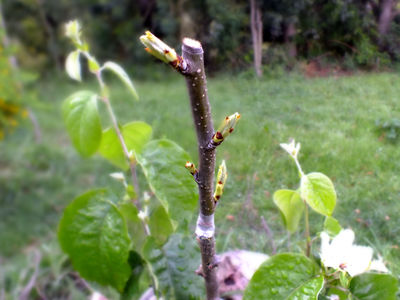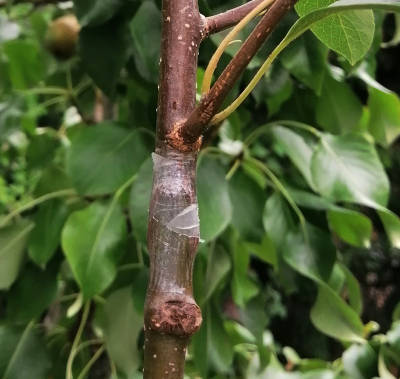Rootstock compatibility for different types of tree
Make sure you are using the correct roots or host tree for your scions or you will be wasting your time
| Rootstock | Scion |
|---|---|
|
Almond Although they prefer well-drained, deep, loamy soils, they will tolerate other soil types, including poor soils, as long as they are not wet or poorly draining, which they absolutely cannot abide. |
Almond, Peach, Nectarine, Asian Plum, Apricot (prefers own apricot rootstock), European Plum (many varieties incompatible), Ume, Plumcot |
|
Apple a range of heights from 3 - 10 meters |
Apple, Medlar, Quince, European Pear |
| Apricot | Apricot, Plumcot, Ume, European Plum (most varieties incompatible), Peach (short-lived), Nectarine (short-lived), Asian Plum |
| Asian Pear | Nashi (Asian pear), Asian pear hybrids, European pear (fruit quality affected, some partial or delayed incompatibility) |
| Cherry | Sweet Cherry, Sour Cherry |
|
Cherry Plum / Asian Plum Tollerate much wetter soils than other stonefruit |
Asian Plum, European Plum (some varieties incompatible), Plumcot, Ume |
|
European Pear can grow to heights of 13 meters |
European Pear, Northern Spy Apple only, Hawthorn (various species), Medlar (imperfectly compatible), Nashi (Asian pear) |
| Peach | Peach, Nectarine, European Plum (short-lived, many varieties incompatible), Almond, Ume, Apricot (prefers own apricot rootstock), Plumcot, Asian Plum |
|
Quince used to grow dwarf pears at around 4 meters |
Quince, Loquat (dwarfing), Pear Incompatible pear cultivars, requires an interstock of compatible pear
Compatible pear cultivars
|






